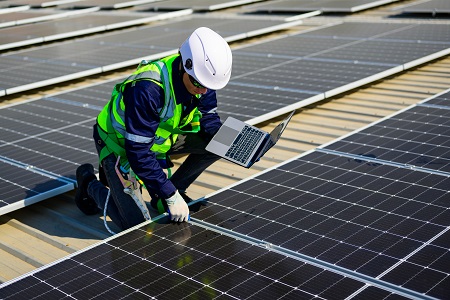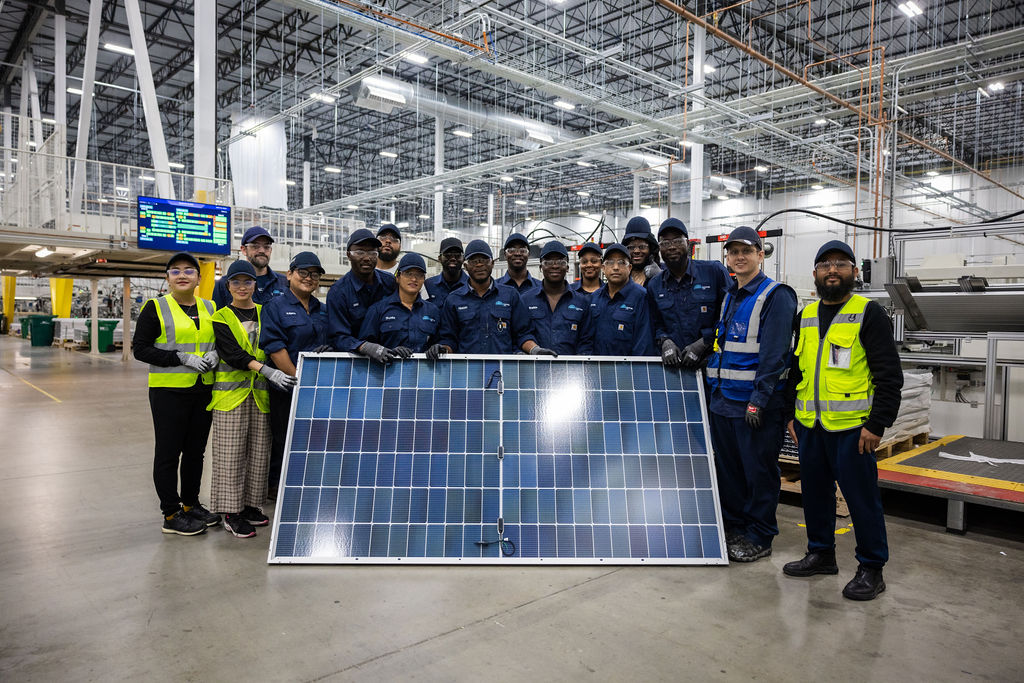Virginia Solar Power Company Reviews: Lumina Solar Concentrates On Offering Advanced Photovoltaic Solutions For Houses And Organizations
History and Founding
Have you ever wondered how a photovoltaic panel company springs from a mere spark of inspiration into a powerhouse of renewable resource? It frequently starts with a vision-- one fueled by a blend of development, determination, and a pinch of serendipity. The journey of lots of solar companies mirrors the advancement of the innovation itself: from large, inefficient panels to sleek, high-efficiency marvels harnessing the sun's bounty.
The Early Days
In the late 20th century, when solar power was still a niche concept, leaders planted seeds for what would end up being a global motion. Picture a small workshop filled with curious engineers, tirelessly explore solar batteries. Their enthusiasm was palpable, frequently driven by a desire to combat climate change and decrease reliance on fossil fuels.
One such anecdote has to do with a founder who, motivated by a camping journey, realized that even in remote locations, the sun could power necessary devices. This easy observation sparked a business's objective to democratize access to tidy energy.
Establishing Concepts

- Development: Constantly pressing the limits of solar innovation to improve performance and resilience.
- Sustainability: Dedicating to eco-friendly production and decreasing carbon footprints.
- Ease of access: Making renewable resource options inexpensive and useful for everyday users.
Milestones in Growth
| Year | Key Event |
|---|---|
| 1985 | Business established in a small garage, focusing on research study and advancement. |
| 1995 | Business solar panel product released, acquiring regional attention. |
| 2005 | Broadened to worldwide markets, embracing worldwide sustainable energy goals. |
| 2015 | Presented cutting-edge solar panel innovation with boosted energy conversion. |
Isn't it remarkable how these incremental actions, typically ignored, shape the energy landscape today? The solar panel business story is not almost innovation; it has to do with a relentless quest for a brighter, cleaner future.

Innovations in Photovoltaic Panel Technologies
Ever noticed how some solar panels shine brighter and last longer? It's not magic; it's the science of photovoltaic performance. Modern photovoltaic panel business invest greatly in innovations like bifacial cells, which catch sunlight from both sides, improving energy harvest without broadening roof area. Have you ever questioned why some panels carry out better on cloudy days? That's due to advances in thin-film solar technology, which thrives under diffused light conditions.
Product Variations Tailored to Unique Requirements
One size never ever fits all. Photovoltaic panel suppliers now provide:
- Monocrystalline panels for maximum performance and smooth aesthetic appeals, suitable for space-constrained roofs.
- Polycrystalline panels, which offer a cost-efficient alternative without compromising too much output.
- Building-integrated photovoltaics (BIPV), merging solar tech seamlessly into architectural elements like windows and facades.
Choosing the best item isn't simply about in advance cost; it has to do with matching your environment, energy objectives, and long-lasting cost savings. For example, homes shaded by trees need panels that stand out in low-light circumstances, something lots of neglect till energy expenses climb up all of a sudden.
Technical Tips for Optimal Choice
- Assess the temperature coefficient-- lower values indicate panels lose less effectiveness on hot days.
- Try to find panels with improved anti-reflective coverings to maximize light absorption.
- Consider the panel's warranty not just for defects, however for guaranteed power output over decades.
- Don't ignore the importance of the inverter technology coupled with the panels; it can make or break your system's efficiency.
Beyond Panels: Emerging Patterns
Picture photovoltaic panels that adjust their angle instantly to go after the sun-- tracking systems are becoming more available, increasing yield considerably. Or solar tiles that blend invisibly into your roofline, transforming your home into a quiet, self-dependent power generator. These innovations are reshaping what a solar panel business uses-- not simply items, however integrated energy solutions.
Market Presence and Global Operations
Ever wonder why some solar panel business seem to grow up in every corner of the world while others barely make a ripple? The difference lies not simply in innovation but in mastering the art of navigating diverse markets. Expanding globally is like planting seeds in different environments-- you need to comprehend each environment's unique conditions to grow.
Take, for circumstances, the detailed dance of logistics and supply chain management. Delivering panels halfway across the world isn't almost range; it's about timing, customizeds, tariffs, and adjusting to regional need fluctuations. A company with robust global operations prepares for these variables, guaranteeing panels arrive on schedule without inflating costs. This foresight is no little task and often separates industry leaders from fans.
Key Methods for Expanding Market Presence
- Localized manufacturing: Establishing production hubs near target audience minimizes shipping delays and import complexities.
- Strategic partnerships: Teaming up with local firms speeds up market penetration and constructs trust.
- Adaptive item style: Customizing photovoltaic panel tech to weather, sun intensity, and infrastructure nuances boosts performance and approval.
What about the human factor? Solar panel companies operating globally must reconcile cultural distinctions and regulatory nuances without forgeting their core objective. For instance, what works in a sun-drenched desert may fail in a humid coastal region. In some cases, the most ingenious solution is merely listening-- taking in local insights to improve technology and method.
Specialists typically recommend a phased rollout instead of a shotgun growth. Why get more info run the risk of overextension when measured growth builds sustainable momentum? Scaling sensibly means balancing ambition with operational durability - Solar Companies in Virginia. After all, in the race for sustainable energy supremacy, perseverance can be as valuable as speed
Ecological Impact and Sustainability Practices
When solar panels first emerged, many assumed they carried zero environmental luggage. However, the reality is more nuanced. The production of photovoltaic cells involves unusual earth metals and energy-intensive processes, which can leave a large carbon footprint before the panels even reach rooftops. The true ecological expense depends greatly on the sustainability practices used by the solar panel business throughout the lifecycle of their items.
How frequently do we stop briefly to consider what occurs to solar panels at the end of their useful life? Unlike batteries or electronics, solar panels can last 25-30 years, but disposal and recycling paths remain underdeveloped in lots of areas. A company devoted to reducing ecological damage will have a robust prepare for recycling photovoltaic materials, salvaging important silicon, glass, and metals to avoid garbage dump build-up.
Secret Sustainability Techniques
- Utilizing low-impact manufacturing methods that decrease water and energy usage.
- Implementing closed-loop systems to recycle production waste back into brand-new panels.
- Engaging in transparent supply chain audits to ensure ethical sourcing of raw products.
- Creating panels for easier disassembly to aid future recycling efforts.
It deserves noting that some solar business have pioneered ingenious methods, such as integrating naturally degradable parts or using less poisonous chemicals during fabrication. This not only decreases ecological pressure but also sets a precedent for the market. The question remains: can the solar market genuinely pivot towards a circular economy model without compromising performance or price?
Professional Tips for Assessing Sustainability
- Ask about the business's commitment to carbon-neutral production and whether they balance out emissions.
- Investigate if they partner with licensed recycling facilities committed to photovoltaic panel waste.
- Look for transparency reports detailing environmental impacts and sustainability objectives.
- Consider the longevity and guarantee of panels as an indirect measure of resource efficiency.
In the end, deciding for solar energy must imply more than just slashing electrical power costs; it has to do with supporting a future where energy is harvested responsibly and waste is attentively handled. Solar panel business that accept this approach not only light up homes however also cast a brighter light on sustainable development.